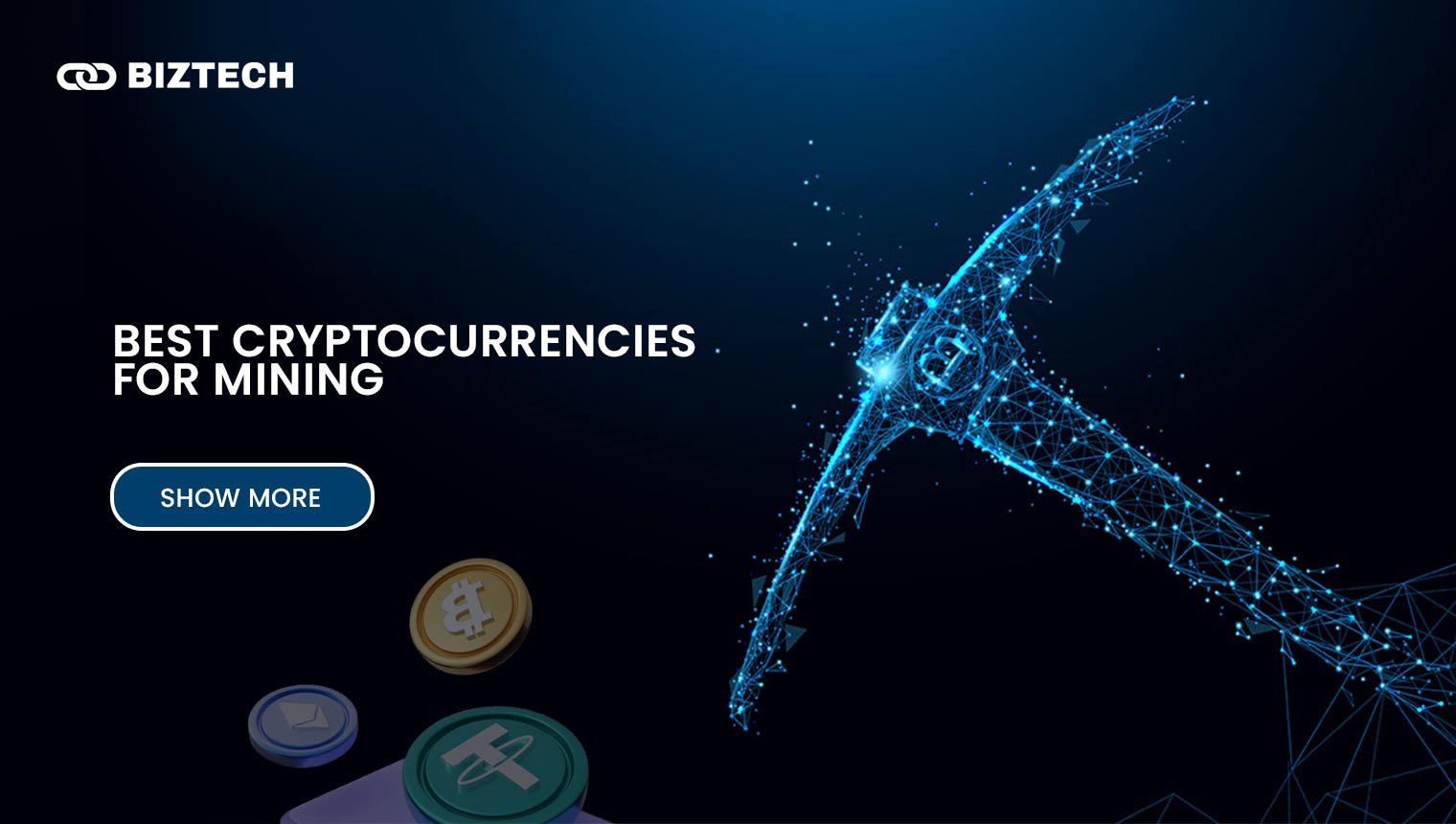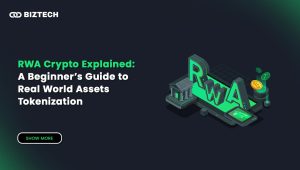Are you looking for the most profitable cryptocurrency to mine? Bitcoin isn’t your only option; there are many profitable choices. Mining involves using powerful computers to validate blockchain transactions, earning cryptocurrency as a reward. This process can be highly profitable, depending on the market value of the mined coins.
- Criteria for Choosing the Most Profitable Cryptocurrencies to Mine
- Overview Table of Top 10 Cryptocurrencies for Mining
- Top 10 Most Profitable Cryptocurrencies to Mine
- 1. Bitcoin (BTC): High Market Value
- 2. Monero (XMR): Privacy-Focused Transactions
- 3. Zcash (ZEC): Zero-Knowledge Privacy
- 4. Ravencoin (RVN): Asset Transfer
- 5. Ethereum Classic (ETC): Decentralized Smart contracts
- 7. Litecoin (LTC): Fast Transaction Speeds
- 8. Dogecoin (DOGE): Meme Culture and Large Mining Community
- 9. Dash: Instant and Private Payments
- 10. Vertcoin: ASIC-Resistant Mining
- 11. Grin (GRIN): Lightweight and Privacy-focused
- Is crypto mining still profitable?
- Risks and Challenges in Cryptocurrency Mining
- Security Risks
- High Electricity Costs
- Mining Difficulty
- Market Volatility
- Hardware Costs
- Regulatory Risks
- Environmental Impact
- Tax Implications
- Conclusion
- Frequently Asked Questions (FAQs)
This article explores the top cryptocurrencies to mine in 2025, considering factors like hardware needs and rewards per block.
Criteria for Choosing the Most Profitable Cryptocurrencies to Mine
Several key factors must be considered when choosing the best cryptocurrency to mine.
Mining Difficulty and Rewards: Difficulty affects how hard it is to mine a block. Higher difficulty can lower profits unless the coin’s value is high. Rewards are the coins earned for successfully mining a block.
Hardware Requirements: Different cryptocurrencies need different mining hardware. Some need ASIC miners, while others can be mined with GPUs or CPUs. The cost and efficiency of the hardware affect profitability.
Profitability: Mining profitability depends on rewards versus costs, including electricity, hardware, and maintenance.
Overview Table of Top 10 Cryptocurrencies for Mining
| Cryptocurrency | Mining rewards per block | Mining Algorithm | Hardware Requirements | Mining Difficulty |
| Bitcoin (BTC) | 3.125 BTC | SHA-256 | ASIC | Very hard |
| Monero (XMR) | 0.6 XMR | Randomx | CPU or GPU (ASIC-resistant) | Easy |
| Zcash (ZEC) | 2.5 ZEC | Equihash | GPU, but ASIC recommended | Easy |
| Ravencoin (RVN) | 2,500 RVN | KAWPOW | CPU or GPU (ASIC-resistant) | Easy |
| Ethereum Classic (ETC) | 2.5 ETC | Etchash | GPU, but ASIC recommended | Easy/Medium |
| Litecoin (LTC) | 12.5 LTC | Scrypt | GPU, but ASIC recommended | Hard |
| Dogecoin (DOGE) | 10,000 DOGE | Scrypt | ASIC solo, GPU in pools | Medium |
| Dash (DASH) | 2.3097 DASH | X11 | GPU, but ASIC recommended | Easy/Medium |
| Vertcoin (VTC) | 12.5 VTC | Lyra2RE(v3) | CPU or GPU (ASIC-resistant) | Easy |
| Grin (GRIN) | 60 GRIN | Cuckatoo32+ and Cuckaroo29 | GPU or ASIC depending on algorithm | Medium |
Top 10 Most Profitable Cryptocurrencies to Mine
1. Bitcoin (BTC): High Market Value
Bitcoin is the most well-known cryptocurrency globally. It’s often the first choice for new miners. It offers a reward of 3.125 BTC per block. Bitcoin mining is very competitive and demands a significant initial investment. This makes it less suitable for at-home miners. You need a top-tier mining rig and should join a mining pool to mine Bitcoin efficiently. ASIC hardware and popular software like CGMiner or BFGMiner are essential for efficient mining. Bitcoin halving events also increase mining difficulty, temporarily lowering profitability until BTC’s value rises again.
2. Monero (XMR): Privacy-Focused Transactions
Monero is a privacy-focused blockchain that keeps transactions completely untraceable. Unlike other blockchains, Monero is suitable for home miners. Its ASIC-resistant design allows miners to use affordable CPUs and GPUs. This helps prevent mining power from becoming too centralized. Monero’s CPU-friendly mining algorithm makes it a top choice for home miners. Many exchanges have delisted Monero due to regulatory concerns about its potential illegal use.
3. Zcash (ZEC): Zero-Knowledge Privacy
Zcash is a privacy-focused coin that’s rewarding for home miners. It offers mining pools for better chances of earning rewards. Zcash allows “shielded” transactions to ensure privacy through zero-knowledge proofs. ASIC miners, like the Antminer Z9, are ideal for mining Zcash. Software like EWBF’s Cuda Miner is commonly used for optimal mining results. While you can mine Zcash with a GPU, ASIC rigs are more profitable. In 2021, the Zcash community chose not to prioritize ASIC resistance. Like Monero, Zcash has been delisted by several major exchanges due to regulatory pressures.
4. Ravencoin (RVN): Asset Transfer
Ravencoin is a blockchain based on Bitcoin and designed for easy token issuance. Its ASIC-resistant design makes it ideal for home miners. The KAWPOW algorithm allows mining with a CPU or GPU. Ravencoin is tailored for asset transfer and issuance, with an ASIC-resistant approach suited for GPU mining. Nvidia GTX 1080 Ti GPUs and software like KawPow Miner and T-Rex Miner are commonly used. Mining profitability depends on factors like electricity costs and market fluctuations, requiring careful monitoring in 2025.
5. Ethereum Classic (ETC): Decentralized Smart contracts
Ethereum Classic (ETC) emerged after the 2016 DAO hack split Ethereum. It is less popular but relatively easy to mine. ETC has no plans to switch to PoS, unlike Ethereum. Mining ETC is easier now than it was before its PoS switch. A GPU can be used to mine ETC, but an ASIC rig is more efficient. The Ethereum Classic focuses on decentralization and immutability. Use GPUs to mine with software such as Claymore’s Dual Miner or PhoenixMiner. AMD or Nvidia graphics cards are needed, and popular software includes PhoenixMiner and GMiner.
7. Litecoin (LTC): Fast Transaction Speeds
Litecoin is one of the earliest cryptocurrencies, similar to Bitcoin but improved. It’s often called “silver” to Bitcoin’s “gold.” Litecoin has faster transaction confirmations and uses a different hashing algorithm. Solo mining is not very profitable; using a mining pool and ASIC rig is recommended. The Antminer L3+ and software like EasyMiner and CGMiner are ideal for Litecoin mining. Litecoin’s lower difficulty compared to Bitcoin makes it attractive. Halving events affect LTC value and mining profitability temporarily. Litecoin is designed for fast peer-to-peer transactions. While solo mining is tough, joining a mining pool can be profitable.
8. Dogecoin (DOGE): Meme Culture and Large Mining Community
Dogecoin began as a meme but now has a large mining community. It has grown in popularity because of Elon Musk’s support. Mining Dogecoin is easier than Bitcoin due to frequent block rewards. It requires expensive ASIC equipment. As the original memecoin, Dogecoin can be profitable to mine. Solo GPU mining could be more effective; using an ASIC rig or joining a mining pool is better. Dogecoin uses the Scrypt algorithm, which is suitable for GPU mining. Use mining software such as CGMiner or EasyMiner with Nvidia GeForce GPUs.
9. Dash: Instant and Private Payments
Dash is a cryptocurrency that forked from Bitcoin to improve transaction speed and privacy. It’s a good choice for home miners with GPUs. However, using an ASIC rig is more profitable. Dash was created to address issues with Bitcoin’s speed and privacy. While GPUs can mine Dash, ASICs offer better earnings. Dash provides a viable option for home mining but benefits greatly from ASIC machines.
10. Vertcoin: ASIC-Resistant Mining
Vertcoin is an open-source variant of Bitcoin that prioritizes decentralization. It uses an ASIC-resistant mining algorithm, similar to Ravencoin and Monero, to prevent mining power from concentrating in the hands of a few. This feature makes Vertcoin accessible for home miners using GPUs and keeps start-up costs lower. Vertcoin’s approach aims to ensure a more democratic mining environment. Its lower mining difficulty compared to Bitcoin also contributes to its attractiveness for individual miners looking for a cost-effective entry into cryptocurrency mining.
11. Grin (GRIN): Lightweight and Privacy-focused
Grin was launched in 2019. It focuses on privacy and resisting censorship. It features two mining algorithms: Cuckatoo32+ (ASIC-friendly) and Cuckaroo29 (ASIC-resistant). This dual approach allows for mining with both GPUs and ASIC machines. The choice of algorithm affects mining efficiency and hardware requirements. Cuckaroo29 is more suited for home miners with GPUs, while Cuckatoo32+ benefits those using specialized ASIC hardware. Grin’s design aims to offer flexibility and inclusivity for different mining setups.
Is crypto mining still profitable?
Yes, crypto mining can be profitable, but several factors influence earnings. Electricity costs are critically important since mining uses a lot of power. Miners should check their electricity rates to ensure they make a profit. Mining difficulty can increase as more people join, affecting profitability. It’s important to monitor current difficulties and anticipate changes. Market conditions, such as cryptocurrency price fluctuations, also impact profits. Staying updated on market trends helps adjust strategies for better returns. While Bitcoin mining requires expensive hardware, smaller cryptocurrencies may have better margins. Additionally, remember that mining rewards are taxable.
Risks and Challenges in Cryptocurrency Mining
Cryptocurrency mining comes with various risks and challenges. Miners face issues like security threats, high electricity costs, and market changes. Handling these challenges is essential for successful mining.
Security Risks
Hacking poses a significant risk, as cybercriminals may target mining equipment to steal rewards or sensitive data. Additionally, malware can compromise mining rigs, extract confidential information, and disrupt operations. Cyberattacks can lead to severe disruptions and financial losses, making security a critical concern for cryptocurrency miners.
High Electricity Costs
Mining operations consume a substantial amount of energy, which significantly impacts overall profitability. As electricity prices rise, they can further erode profit margins, making it crucial for miners to carefully manage and assess their energy costs to maintain profitability.
Mining Difficulty
As more miners join the network, the difficulty of solving mining puzzles increases. This heightened difficulty requires miners to regularly adjust their strategies and upgrade their hardware to remain competitive. Adapting to these changes is essential for maintaining efficiency and profitability in mining operations.
Market Volatility
Cryptocurrency prices can be highly volatile, which affects mining profits. Fluctuations in market value can lead to unexpected financial losses, making investing in mining risky. Miners need to stay informed about market trends to manage these risks effectively.
Hardware Costs
High-quality mining rigs and ASICs require a significant upfront investment. Additionally, rapid technological advancements can quickly make this equipment outdated, leading to depreciation. Miners need to consider both the initial costs and the potential for obsolescence when investing in mining hardware.
Regulatory Risks
Mining operations may encounter legal challenges or changes in regulations. It can be difficult to ensure compliance with local laws and regulations. Miners must stay informed about legal requirements to avoid potential issues and maintain lawful operations.
Environmental Impact
The substantial energy required for mining raises significant environmental concerns. Mining practices must balance profitability with environmental responsibility to ensure sustainability. Miners need to consider the environmental impact of their operations and seek ways to minimize their carbon footprint while remaining profitable.
Tax Implications
Mining rewards are considered taxable income, which impacts net earnings. Miners must properly track and report their mining income to meet tax requirements. Accurate reporting is essential to avoid legal issues and ensure compliance with tax regulations.
Conclusion
Mining cryptocurrencies in 2025 presents both opportunities and challenges. The most profitable cryptocurrencies to mine offer diverse options, from Bitcoin’s high rewards to more accessible choices like Monero and Ravencoin. Staying informed and adapting strategies will be important for maximizing profitability and managing risks in the ever-evolving world of crypto mining.
Frequently Asked Questions (FAQs)
Disclaimer: This article provides general information on cryptocurrency mining and profitability. Cryptocurrency investments carry risks, and past performance does not guarantee future results. Always conduct your own research and consider consulting a financial advisor before making investment decisions.






